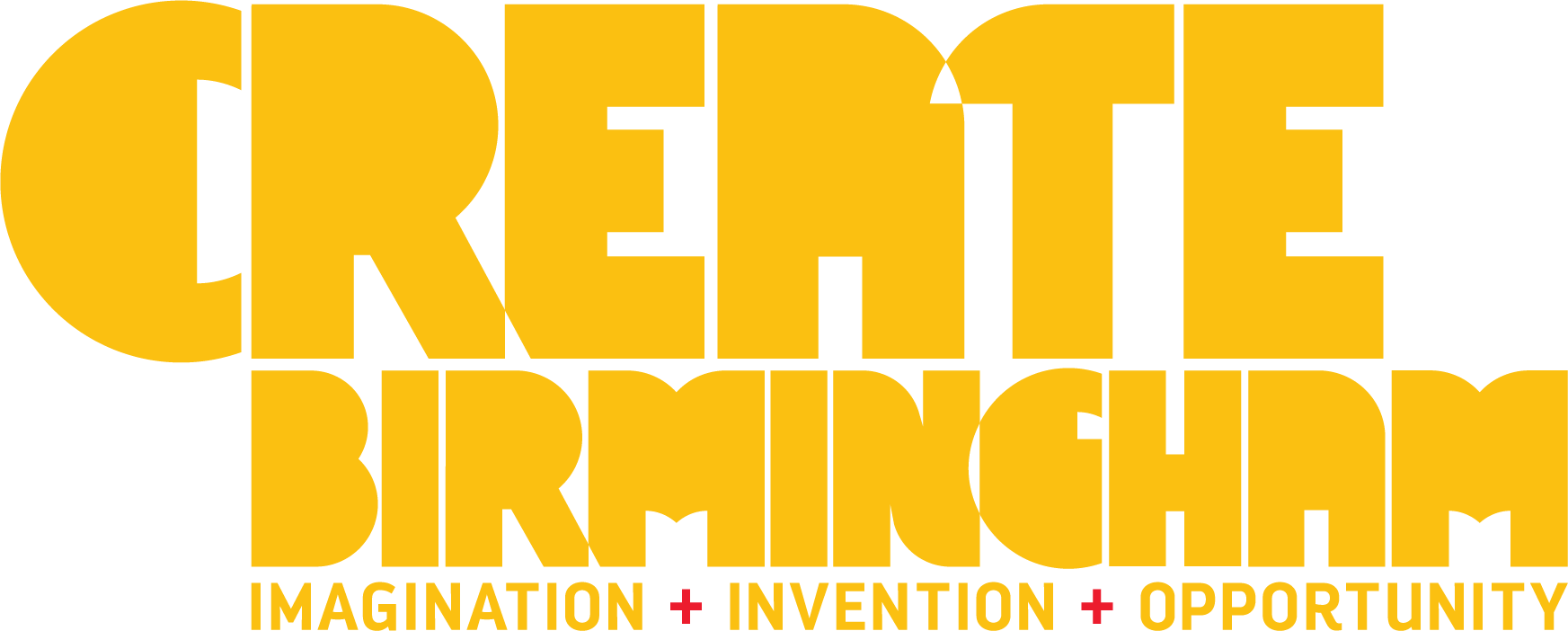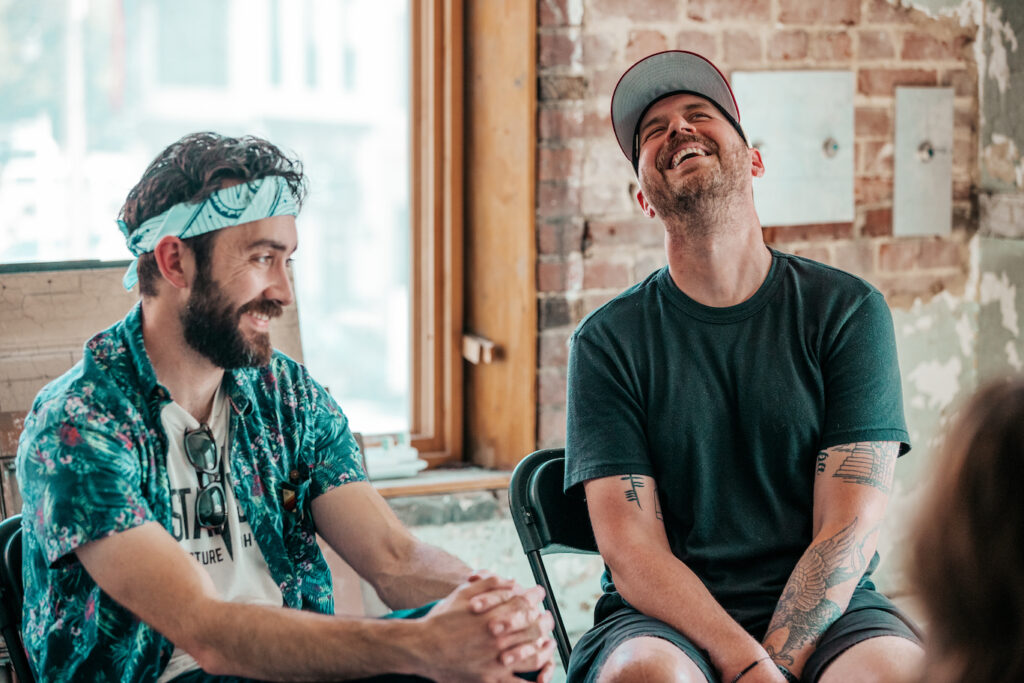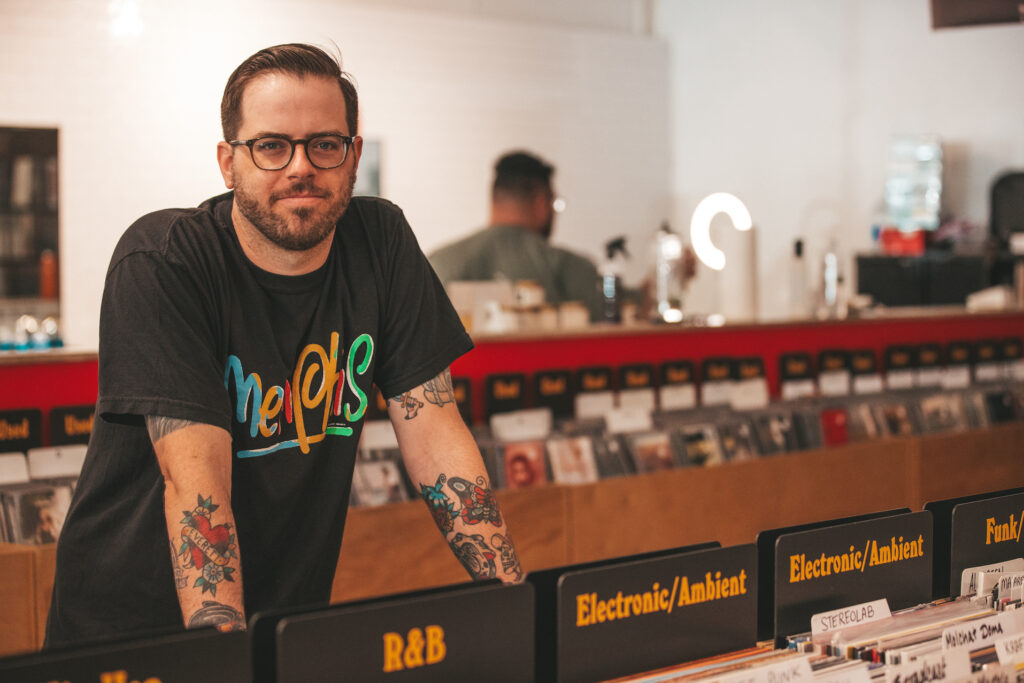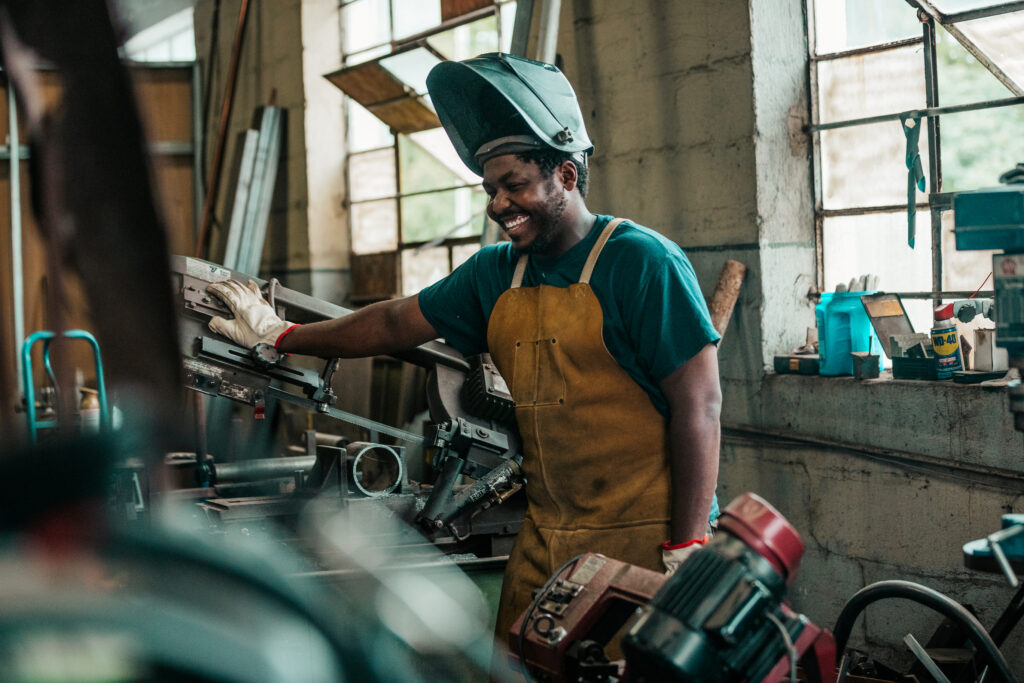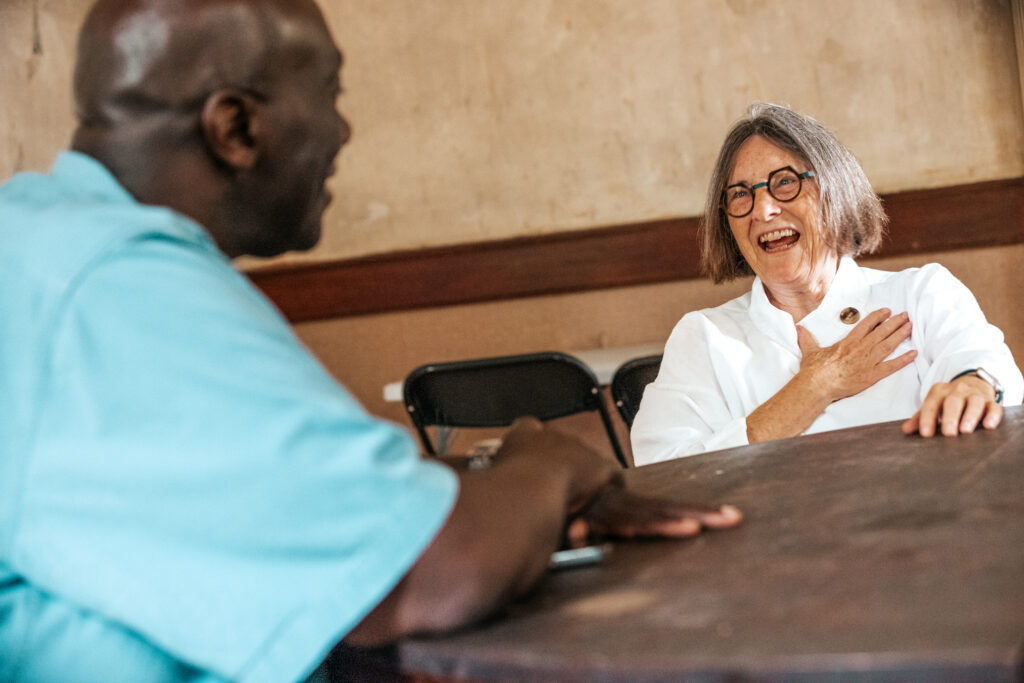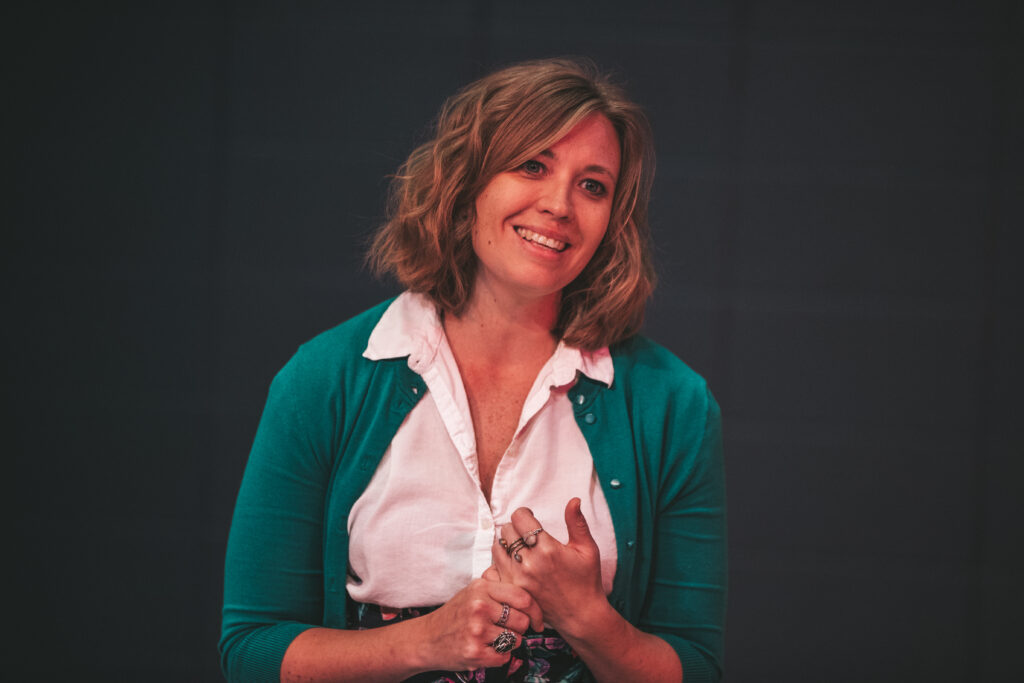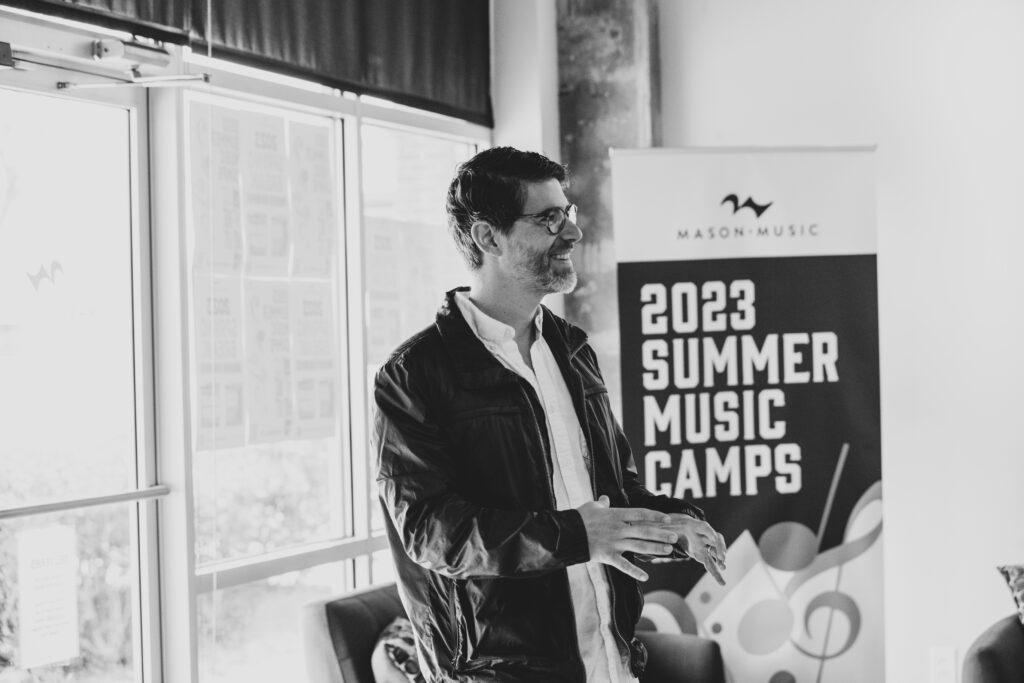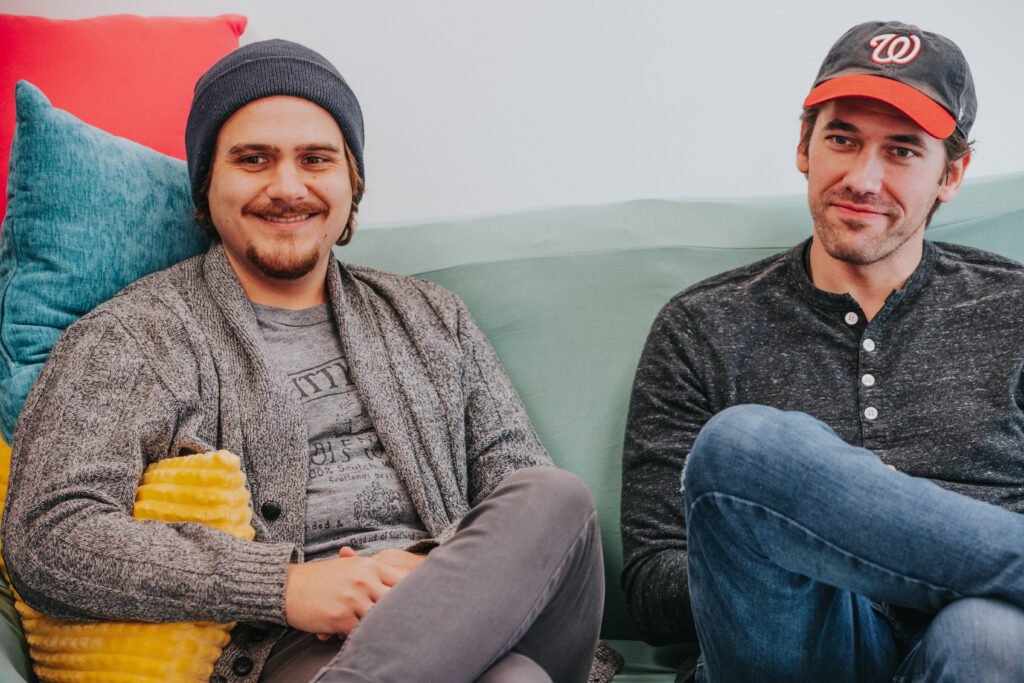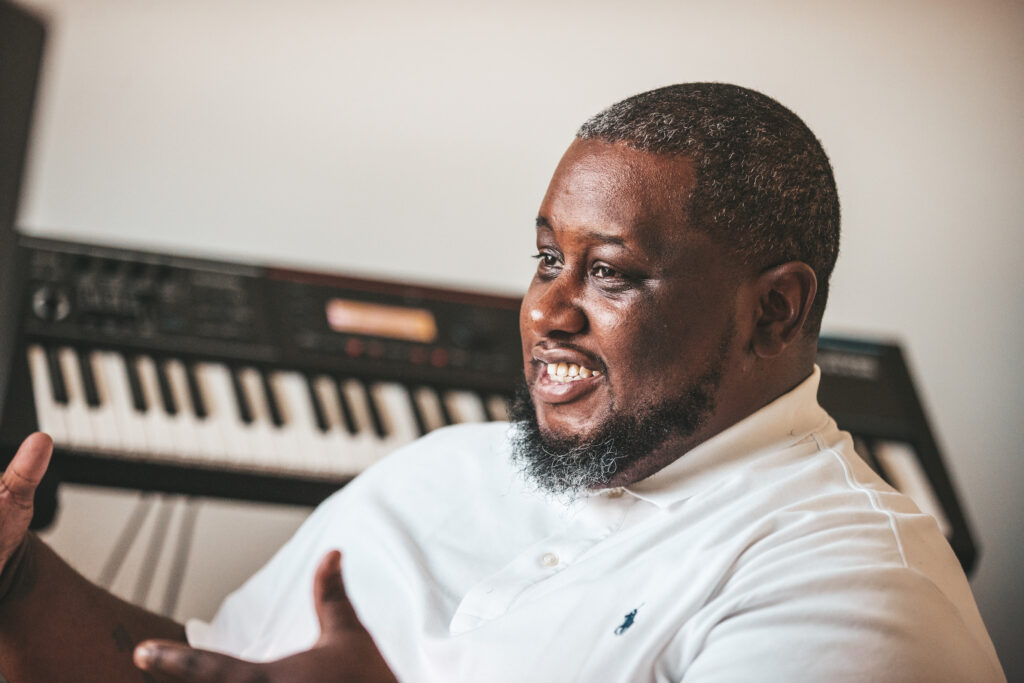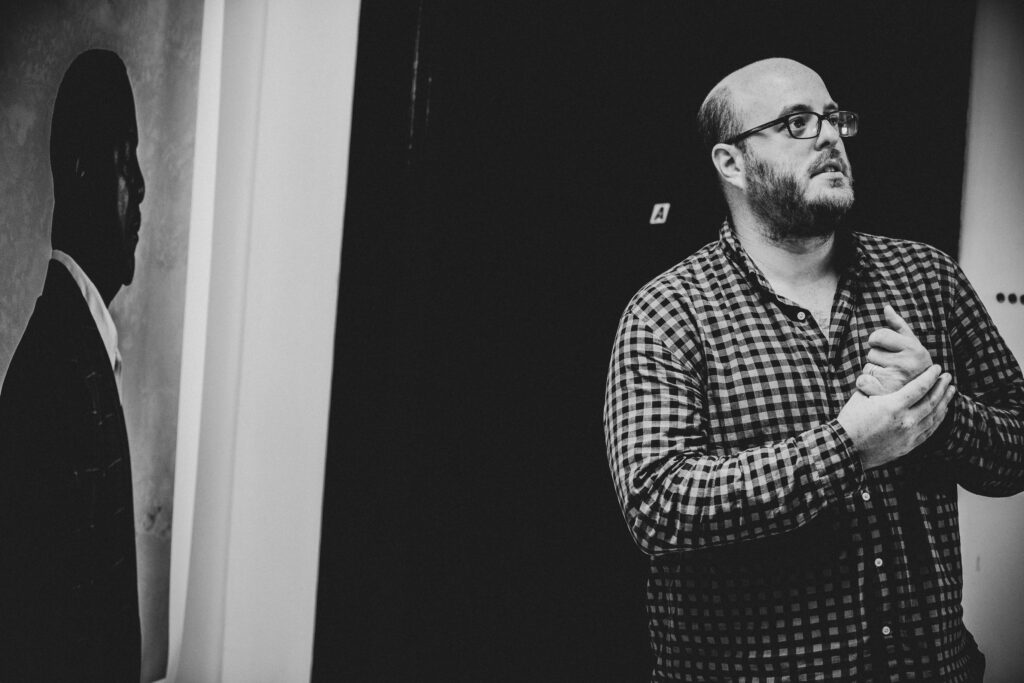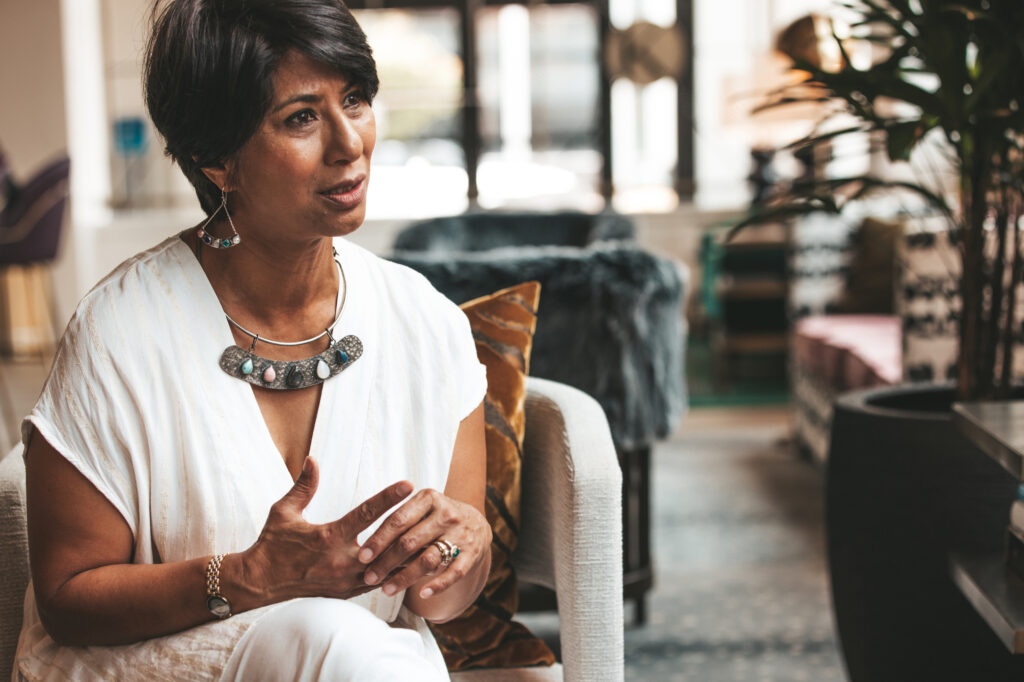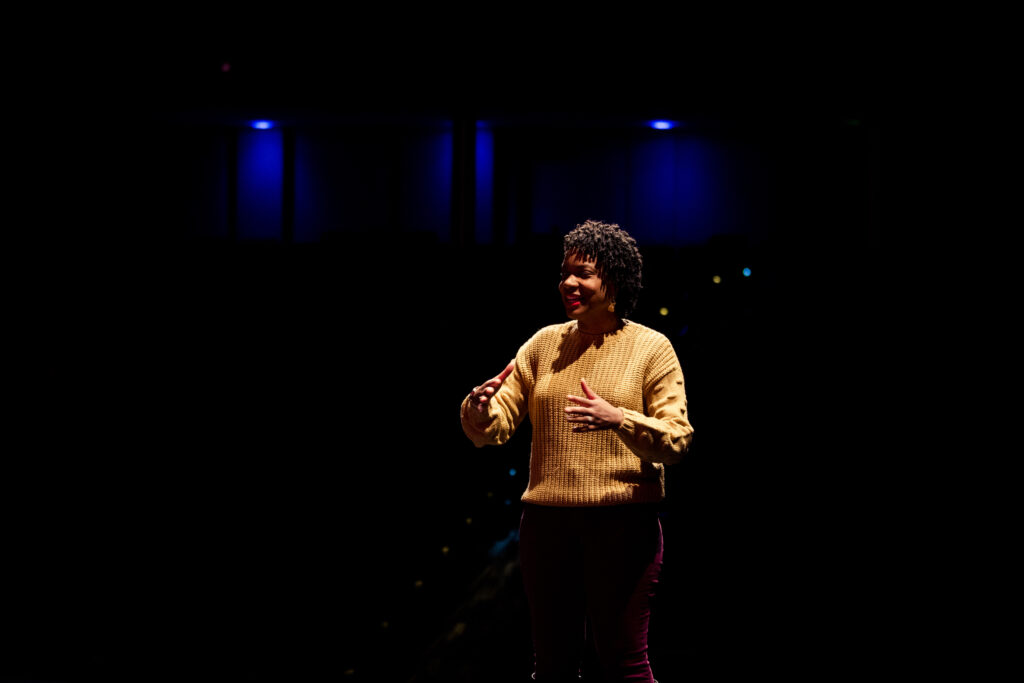Interview by Tonia Trotter
Photos by Ambre Amari
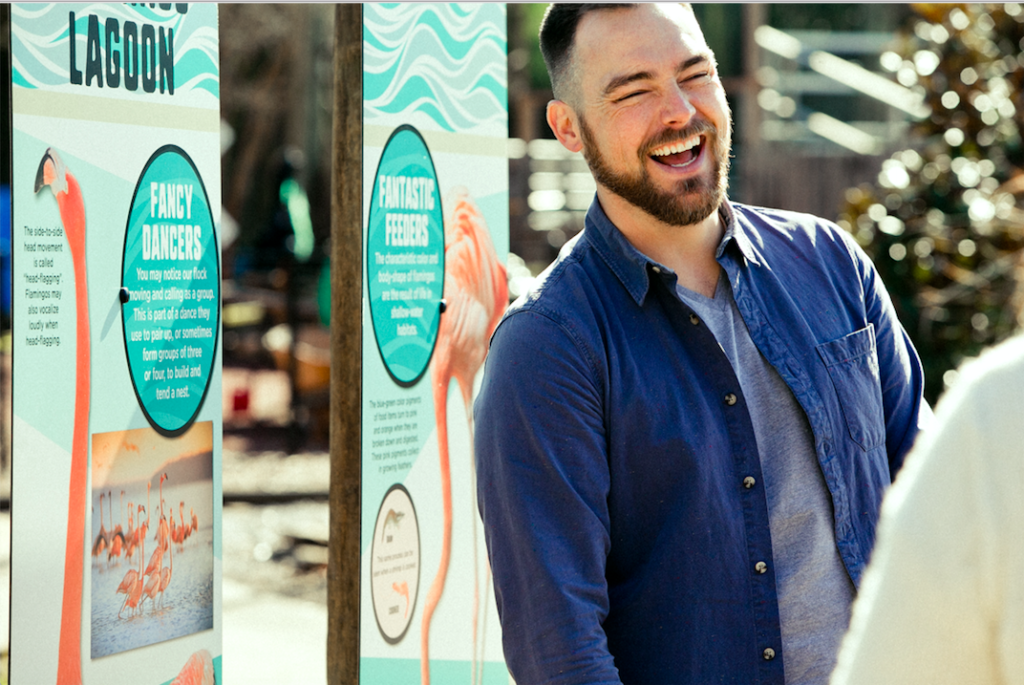 One of Birmingham’s most popular destinations is also one of our greatest resources. As home to a number of endangered species and several conservation programs, the Birmingham Zoo is more than just a spot for fun family outings. This week, in honor of Valentine’s Day, we share a love story about two colleagues who share a passion for the conservation of wildlife: Sam Cohen, an Animal Care Professional, and Jesse Daniel, the Onsite Interpretation Manager.
One of Birmingham’s most popular destinations is also one of our greatest resources. As home to a number of endangered species and several conservation programs, the Birmingham Zoo is more than just a spot for fun family outings. This week, in honor of Valentine’s Day, we share a love story about two colleagues who share a passion for the conservation of wildlife: Sam Cohen, an Animal Care Professional, and Jesse Daniel, the Onsite Interpretation Manager.
How does the Birmingham Zoo contribute to the city beyond being a place we go to observe and appreciate animals?
Jesse: Our CEO always says, “Any great city has a great zoo.” I think giving people a place where they can come see animals that also represents the conservation world within their city is important. We do so much work outside of the zoo gates. One of our many conservation efforts – the PiCA Grant program – sends zoo staffers from Birmingham to places all over the world in order to learn and participate in conservation efforts.
That sounds like quite the adventure and a great incentive to work with the zoo! What does PiCA do? What opportunities have you had to deepen your study through this zoo affiliation?
 Jesse: PiCA stands for Passion into Conservation Action, and it is a grant available to any full-time employees who have been here for a year. They are awarded the opportunity and financing to travel anywhere in the world to work on a conservation project that they are passionate about. It’s an amazing opportunity! Sam and I both just completed our trips.
Jesse: PiCA stands for Passion into Conservation Action, and it is a grant available to any full-time employees who have been here for a year. They are awarded the opportunity and financing to travel anywhere in the world to work on a conservation project that they are passionate about. It’s an amazing opportunity! Sam and I both just completed our trips.
Sam: Our staff has visited every continent except for Antarctica! Some of our staff members have traveled to Nepal or India, but I visited my own back yard! It wasn’t glamorous, but it was important to me. I went to Louisville, Kentucky to work with black-footed ferrets, one of the most endangered mammals in North America. At one point, there were only eighteen left. They were declared extinct twice. I was really proud to work on a project where the species was saved as a direct result of zoo intervention. Louisville Zoo has one of the original facilities that worked with the U.S. Fish and Wildlife Service to breed and rerelease these ferrets. Now their populations are estimated to be around 500 currently in the wild, with around a thousand in facilities.
Jesse: I was able to work in the Florida Keys with Florida Aquarium and MOTE Marine Lab studying and helping to restore Acropora coral, which was just added to the list of species that the Association of Zoos (AZA) and Aquariums is focusing their efforts on. This coral, in particular, is being wiped out across the Caribbean, and there are some species of coral that are no longer found at all. We were propagating the coral and then going out on dives to transplant on the reefs.
How does the zoo take responsibility for the animals in its care? Are they ever reintroduced into their natural habitat?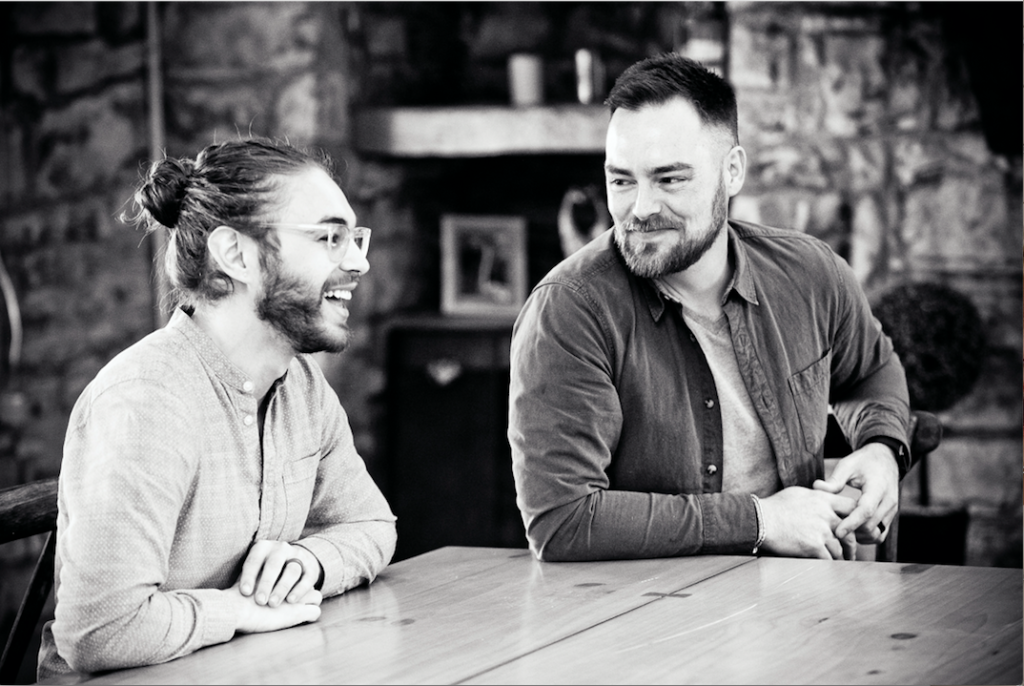
Jesse: You can think of zoos as a safety net for animals in the wild. We have programs called Species Survival Plans. Zoo professionals, wildlife biologists, researchers, and scientists work together to identify and understand the genetic makeup of every animal. They know every lion and its family tree in all AZA institutions. They update us on who can breed with whom and when, so that we can make sure that the animals in our care aren’t just physically healthy and enriched but also genetically healthy. That ensures that if the species goes extinct in the wild we still have a healthy genetic population that can be reintroduced
How did the two of you go from colleagues to couple?
Sam: Although now we both work in the same building for the most part, we work in different departments. We actually “met” online through a dating app, but realized that we recognized each other from work.
Jesse: Sam messaged me, and I said, “Don’t send me anything inappropriate! It will be awkward at work!” Ha ha! We went out to get a drink and really enjoyed talking and getting to know each other.
Sam: We started out as friends, but knew that it was more than that pretty quickly. We’ve now been together for about three years. We will get married this spring.
Congratulations! Jesse, your interest in diving played a big part in your engagement. How did a love for the marine world coincide with your love story?
Jesse: When we started talking about our future together, Sam told me that I would have to be the one to propose. I was racking my brain, trying to come up with a plan — potentially during a trip to Alaska in the summer. We ended up joining Sam’s mom on a cruise and scheduled a dive. On our second dive, I noticed Sam struggling a little underwater and went to go check things out. He motioned me over to this big barrel sponge, and inside was a ring.
Sam: It was a silicone band! I was so afraid that we would have some sort of mishap, and I would lose the ring! I’d secretly been planning for months! It didn’t play out as gracefully as I hoped it might, but he said yes and pulled our regulators out to kiss me.
How do you make it a priority to support each other? Does working together make a difference in terms of understanding or challenges?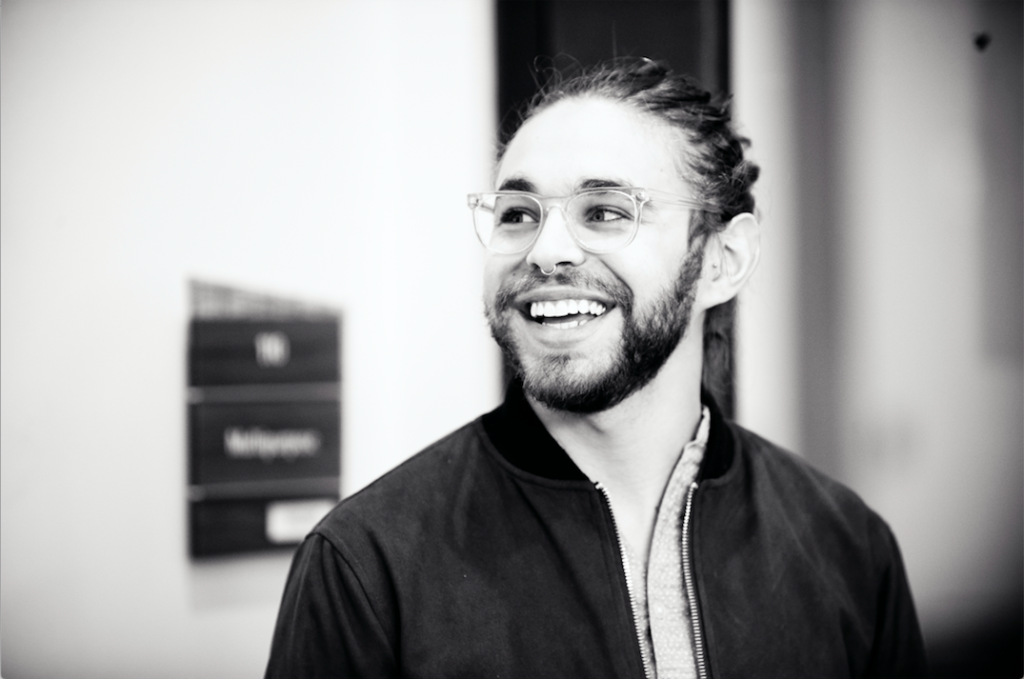
Jesse: It’s nice to have someone to come home to and complain to! Ha! Especially when they can relate. We have our own departments and worlds within our jobs, but there’s, fortunately, some overlap, and we can really understand each other.
Sam: We do eat lunch together every day, and I’m lucky that I can lean on Jesse a lot when I need advice on how to handle a guest situation or have an education question. We have our challenges too! When I took Jesse’s interpretive training, he wouldn’t watch my presentation and give me feedback because he said he couldn’t be objective. I had to call a friend over to watch me!
Jesse: I think it’s frustrating to me, and Sam too, that I don’t really have a 9-5 schedule. There are times when I have to work weekends or just extended hours during the week. Sam’s schedule has more regularity, and it can be challenging to carve out enough quality time together. Sam is understanding about that, and I really appreciate his support. We do have the same weekend days off, and that’s rare for couples within the zoo.
Sam: Jesse supports me too. There have been times when I’ve had to medicate an animal at three in the morning or check on them if there’s a power outage. Jesse will stay up with me when I have to come in or even go with me.
What are some of the behind-the-scenes happenings that people might be surprised to learn? What are some especially fun parts of working at the zoo?
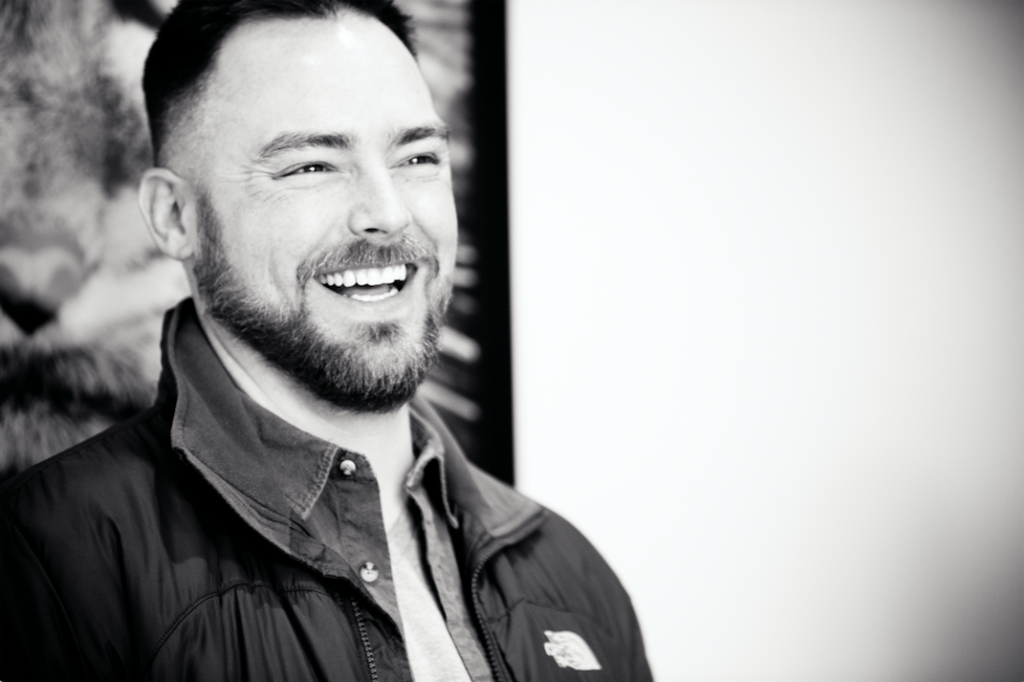 Sam: The zoo is closed two days a year — Thanksgiving and Christmas. But we still have to feed and medicate the animals. It always sounds like I’m trying to get out of being at a party, but there was a Christmas gathering when I told everyone, “I have to leave and go put hemorrhoid cream on a skunk’s butt.” Everyone thought I was joking. I wasn’t.
Sam: The zoo is closed two days a year — Thanksgiving and Christmas. But we still have to feed and medicate the animals. It always sounds like I’m trying to get out of being at a party, but there was a Christmas gathering when I told everyone, “I have to leave and go put hemorrhoid cream on a skunk’s butt.” Everyone thought I was joking. I wasn’t.
Not everyone knows that Viagra was originally developed as a heart and high blood pressure medication. In nature, animals would rarely live long enough to develop these issues, but here, we can regulate that with Viagra. So, last year was hemorrhoid cream and this year, I had to leave to give Viagra to a different skunk and a vulture. A lot of what we do centers around education.
In addition to our outreach programs, we have kids at the zoo for our summer camp and field trips all the time! They are all so observant and curious! Sometimes, we have to answer a lot of questions about mating and digestive habits because the animals don’t care who’s watching. The kids love it, and to be honest, it is funny!
What can people learn from animals?
Jesse: The greatest thing I think we can learn from animals is compassion. We see animals as so separate from ourselves — something to have as a pet or a food source or a nuisance that we need to get rid of from our homes and yards. When you can help someone learn to show compassion for animals, they generally show compassion for people too.
